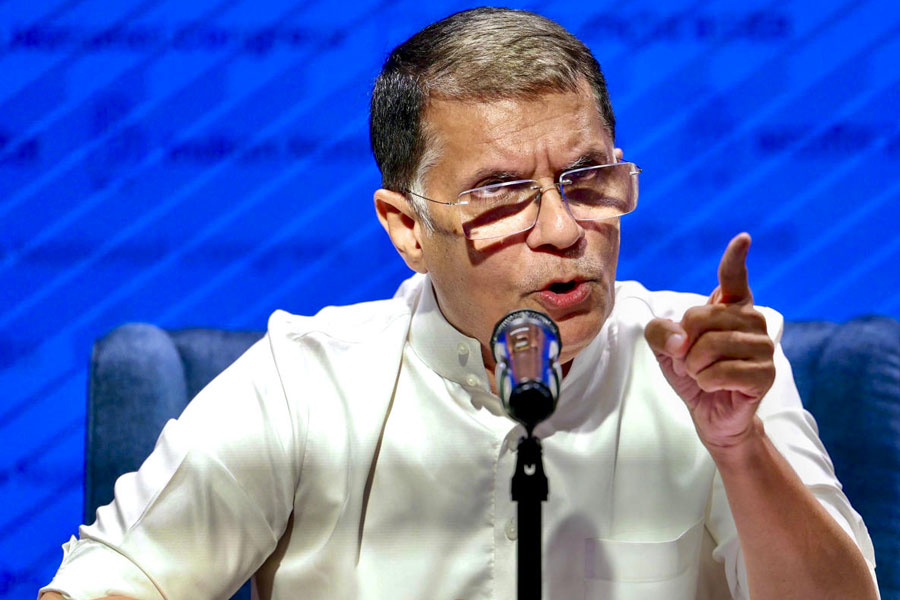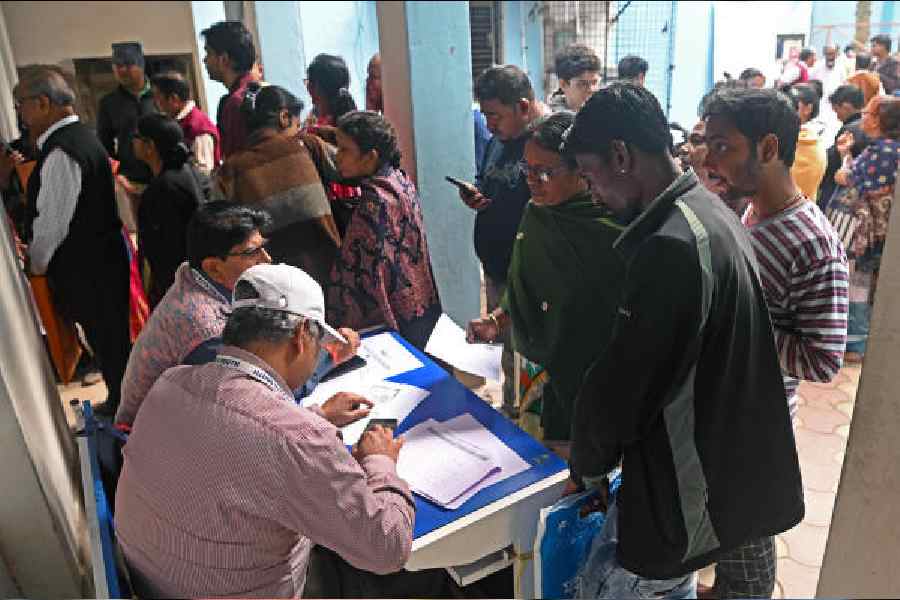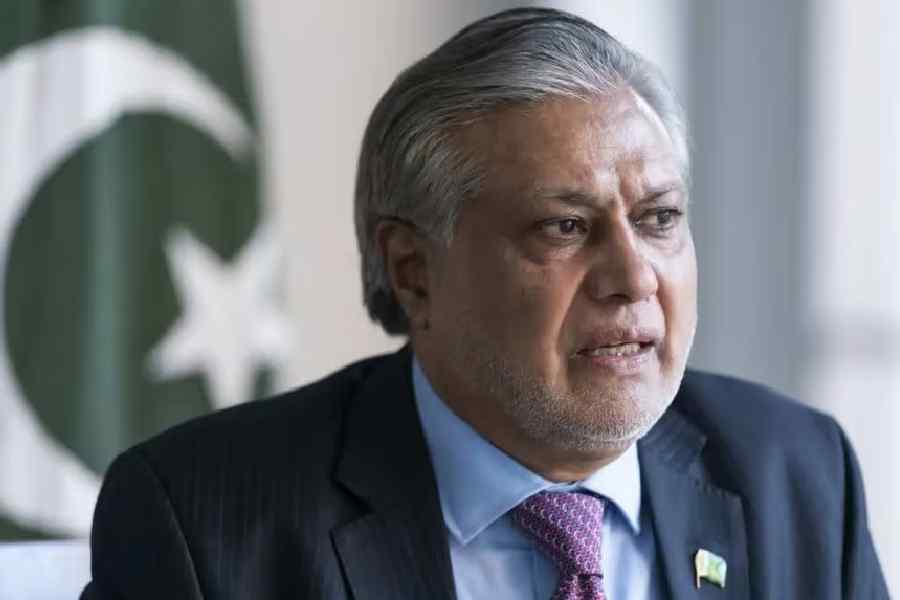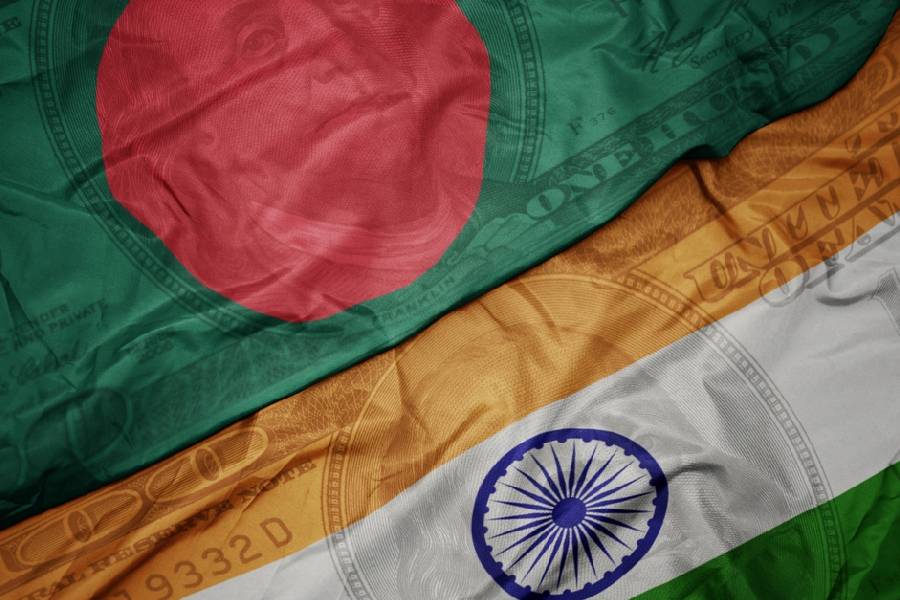

This has to be the right house. I can hear the sounds of a tanpura playing, and right in front of me is a black and white portrait of Begum Akhtar. And sitting across a low table is ghazal singer Rita Ganguly.
She is on the phone right now, discussing an event that marks the beginning of Begum Akhtar's centenary year. On Monday — on her 99th anniversary — a documentary film on Akhtar, or Ammi as Ganguly and her other disciples called her, will be screened in Delhi. Ganguly, who runs the Begum Akhtar Academy of Ghazal in the capital, will give a talk on her old association with the late singer.
'One evening is not enough to talk about the marvellous artiste and her music. But this centenary celebration is an effort to pay homage to my exemplary ustad, who not only taught me music but also humility and patience,' Ganguly says.
The singer, who trained under Begum Akhtar for nine years, has seen her from close quarters. Lucknow — where both lived for several years (Ganguly as a child and Akhtar later in life) — strengthened the bond between the two. But unlike Akhtar who had a troubled childhood, Ganguly grew up in comfort.
Ganguly's father, freedom fighter K.L. Ganguly, was among those who started the newspaper National Herald. Mother Meena was a homemaker. Rita grew up in Lucknow in an atmosphere of music and dance. When she was four, she danced — impromptu — at a cultural event organised by her parents. Freedom fighter and poet Sarojini Naidu, who was the chief guest, was so impressed by her performance that she insisted 'Baby Rita' accompany her to every cultural event she attended.
Baby Rita, clearly, was as charismatic as Bibbi Sayyed — which was how Begum Akhtar was known. She was born in 1914 in Faizabad, but her lawyer father abandoned the family soon thereafter. Bibbi was gifted with a magical voice, and though her mother did not want her to sing, her uncle insisted that she be sent to train under sarangi exponent Ustad Imdad Khan and then under Ata Mohammed Khan of Patiala. Later, she lived in Calcutta with her mother and started learning music from singers Ghulam Mohammad Khan and Jhande Khan Saheb.
Her first concert, contrary to popular belief, was not at 15, Ganguly maintains. 'She was 11 when she had her first performance in Calcutta. She stole the hearts of the audience by singing Deewana banana hai to deewana bana de. Shehnai maestro Bismillah Khan too made his debut at the same event, says Ganguly, who is the author of Bismillah Khan and Benaras — the Seat of Shehnai.
Akhtar was christened Akhtari Bai Faizabadi by another of her gurus, thumri and khayal singer Ustad Zamiruddin. As a young artiste, she sang for the Megaphone Record Company, which turned her fortune around. Having grown up in poverty, the monthly salary of Rs 500 which the record company paid her was significantly large. And she even had a house in central Calcutta's Ripon Street and a car.
Like her mentor, Ganguly has also had close ties with Bengal. At the age of 12, she went to Visva-Bharati, Tagore's University, to study history, but learnt music and dance as well.
Her elder sister was the Rabindrasangeet exponent Gita Ghatak. But for Ganguly, even though she learnt Rabindrasangeet along with classical music at Visva-Bharati, Bengali music was never an option. 'As I grew up in Lucknow, I didn't consider myself a Bengali. Also, Rabindrasangeet would have restricted my reach only to Bengal and I always wanted recognition at the national level,' she stresses.
What caught her interest as a student was dance. At Santiniketan, she learnt Kathakali and Manipuri, and later trained under Kathakali legends Kunju Kurup and Chandu Pannikar. She learnt modern dance from America's Martha Graham, and performed Kathakali at the Bolshoi theatre in the former Soviet Union. She also taught at the National School of Drama in Delhi where she introduced a course called Movement and Mime.
An established dancer in the Fifties, Ganguly strayed into music. She was performing Kathakali at a show in Delhi when the vocalist accompanying her forgot some lines from the song being sung. So the dancer started singing. After the performance, Kathak dancer Shambhu Maharaj greeted her backstage and complimented her on her voice. He also persuaded her to learn music from him. And that was the start of her musical life.
Sometime in the early Sixties, classical singer Siddheshwari Devi visited Shambhu Maharaj when Ganguly was singing. 'She loved my voice and offered me a national scholarship for classical music,' Ganguly says, and adds that she travelled around the country with her, learning more and more about the art.
And, then, at a performance with Siddheshwari Devi in Lucknow, Akhtar heard Ganguly and wanted her as a student. But for that Akhtar needed Siddheshwari Devi's permission — and the two legendary singers were not on the best of terms.
So Akhtar went to Siddheshwari's house in Delhi one night. 'It was around 11pm when she came to Amma's house. 'Look, who's come to your door after 30 years,' Ammi said to Amma in Hindi. The same night, the ganda bandh (symbolic acceptance of a disciple by a teacher) ritual happened,' Ganguly says.
The singer is interrupted by a phone call. As she talks animatedly on the phone, I notice that she looks considerably younger than her 73 years. She is wearing an orange cotton sari, and the silver bangles on her wrists and the pearls in her neckpiece add more grace to her beauty. The diamond nosepin she is wearing is the one Akhtar used to wear.
'It was gifted to me by Abba, her husband, after her death,' Ganguly says.
Akhtar married lawyer Ishtiaq Ahmed Abbasi in 1945. Ganguly rejects stories that Abbasi did not allow her to sing. 'She wanted to have a home. So she didn't sing for eight years. But after she had six miscarriages, she got back to singing. The doctors advised her to do so to help her fight depression.'
Ganguly can't stand rumours about Akhtar that continue to float nearly 40 years after her death. She rejects theories that Akhtar was a tawaif, or a courtesan. 'Her mother once requested the tawaif community in Mumbai to take her under their fold and even offered to give them Rs 1 lakh in exchange. But they refused,' she adds.
She adds that she knows Ammi's story because she spent numerous evenings with her. Akhtar loved dressing up her gudiya (as she referred to Ganguly). 'She had gifted me several colourful ghararas. She used to make braids and put jhumars (hair ornament) on my hair,' Ganguly recalls.
Akhtar smoked numerous Capstan cigarettes through the day and also loved her whisky. 'She gave up drinking for two years after coming back from Haj but started again,' she says.
But the ghazal queen (she was called Mallika-e-ghazal) had also faced traumatic times. Her twin sister Zohra was poisoned as a child and later died. Their house in Lucknow caught fire. She was pregnant when she was 13, and had to later introduce her daughter Shamima to the world as her sister.
'She could never forget these incidents. She hated going back to her hotel room after a performance because the loneliness reminded her of her pain,' Ganguly recalls. 'Loneliness was her constant companion.'
The author of the book Ae Mohabbat... Reminiscing Begum Akhtar had an enduring bond with her teacher, where religions and rituals mingled. Akhtar was a devotee of Lord Krishna and Ganguly fasted for roza for five years while accompanying her.
'I used to cook kebabs and korma for iftar,' Ganguly remembers. But Akhtar, she adds, was not a foodie. 'She loved simple food, mostly arhar dal.'
When Ganguly's son Arijit was born, Akhtar barged into the nursing home late at night and started singing a traditional song heralding the arrival of a child. 'She distributed sweets to everyone saying, 'Have something sweet, Begum Akhtar has had a child'. She always considered my child her own,' says Ganguly, who was married to former Sangeet Natak Akademy secretary Keshav Kothari.
Once Arijit, then 10 months old, was missing from home. A day later, the distraught mother got a call from Akhtar, who demanded that some woollens be sent over to her house for the child. 'It was only then I discovered that the child was with her,' Ganguly adds.
Akhtar and Ganguly had another bond — and that was cinema. But Akhtar, who acted in films such as Mumtaz Begum, Jawaani Ka Nasha, Roti and Jalshaghar, did not want her student to act. Ganguly took a role in Kalpana Lajmi's Darmiyaan only after her death. Her daughter Meghna Kothari also acts in Hindi films.
Ganguly now plans to make a feature film on her Ammi. But funding is a problem, she complains. 'Also, I am looking for someone to play the phases of her life between Bibbi Sayyed and Akhtari Bai Faizabadi,' she says.
Since Akhtar's death — she died after a heart attack suffered during a concert in Ahmedabad in 1974 — Ganguly has been seeking to carry forward her Ammi's legacy through her songs. She believes that Ammi could be best understood by her melodious ghazal — Khushi ne mujhko thukraya hai, dard--gham ne pala hai (Happiness eluded me, and pain nurtured me).
'The ghazal tells her story,' Ganguly says.












